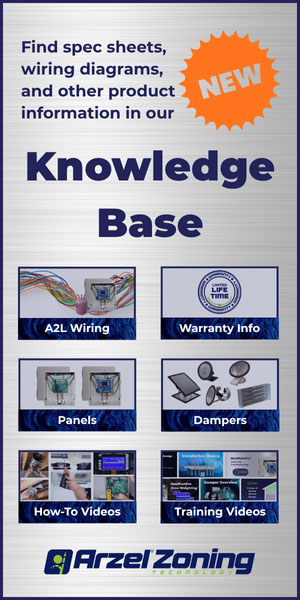Your WHY is also the filter through which all decisions pass to assure they’re in line with the company’s purpose. Let’s say safety is an important motivator to your Performance-Based company.
How will it look if your technicians aren’t equipped with personal low-level CO (carbon monoxide) monitors and they’re inconsistent when it comes to measuring and documenting combustion safety on every service call? It would appear their actions don’t align with your WHY.
If this isn’t the case, you’ll look like a hypocrite to team members. You say one thing, but another is being done. If you’ve ever driven a car that’s out of alignment, you know it’s a constant battle to keep the vehicle in the lane. Your company reacts the same way when your WHY and actions are inconsistent with each other.

A well-thought-out WHY that is available for all to see also helps to weed out those who can’t live up to your high standards. If your standards aren’t in plain sight as a gauge for potential team members, anyone with industry experience looks great. This is especially important as a newer generation of workers comes on board ‘ they want to make a difference. A company that has its values out there for the world to see is more attractive to the brightest talent.
So put your WHY where everyone can see it and hold the team accountable. Also, have your team members hold each other accountable. If the WHY is in front of everyone, it’s obvious what you stand for. Everyone will understand your motivation to assure their actions align with that of the company.
A well-thought-out WHY that is available for all to see also helps to weed out those who can’t live up to your high standards.
Five Coaching Steps
Once your WHY is defined and in plain sight, it’s time to start coaching. You can summarize the coaching process in five steps that are repeatable and provide a consistent format to use.
Step One: Show. In the first step, you show the team member how to do a task from start to finish. You provide the example and pattern they should follow. Make sure you perform the task like you want it repeated.
Let’s say you’re working with a younger technician who is learning to measure static pressure. In this step, you will walk them through each step from start to finish ‘ from installing test ports to performing and recording the measurements.
Don’t assume the team member’s knowledge at this point ‘ keep it simple for best success.
Step Two: Support. In the second step, you continue to perform the task and then guide the team member as they work with you. Explain why and how you’re performing each step to help them understand it’s importance.
Picking up from the previous example, you continue to work with your technician to measure static pressure. You begin to hand over test instruments and accessories to them so they can help you perform the measurements.
Let them work at their own pace to assure they understand why they’re doing what they’re doing. Patience is important. Don’t throw a lot of material at them all at once and expect them to understand it from your experienced perspective.
Step Three: Supervise. In the third step, trade places with the team member and let them perform the task while you watch and assist with any needed corrections. Ask them to explain why they did something in their own words after they master the task. The goal is to get them to think and to build confidence.
Click below to go to the next page:













Recent Comments